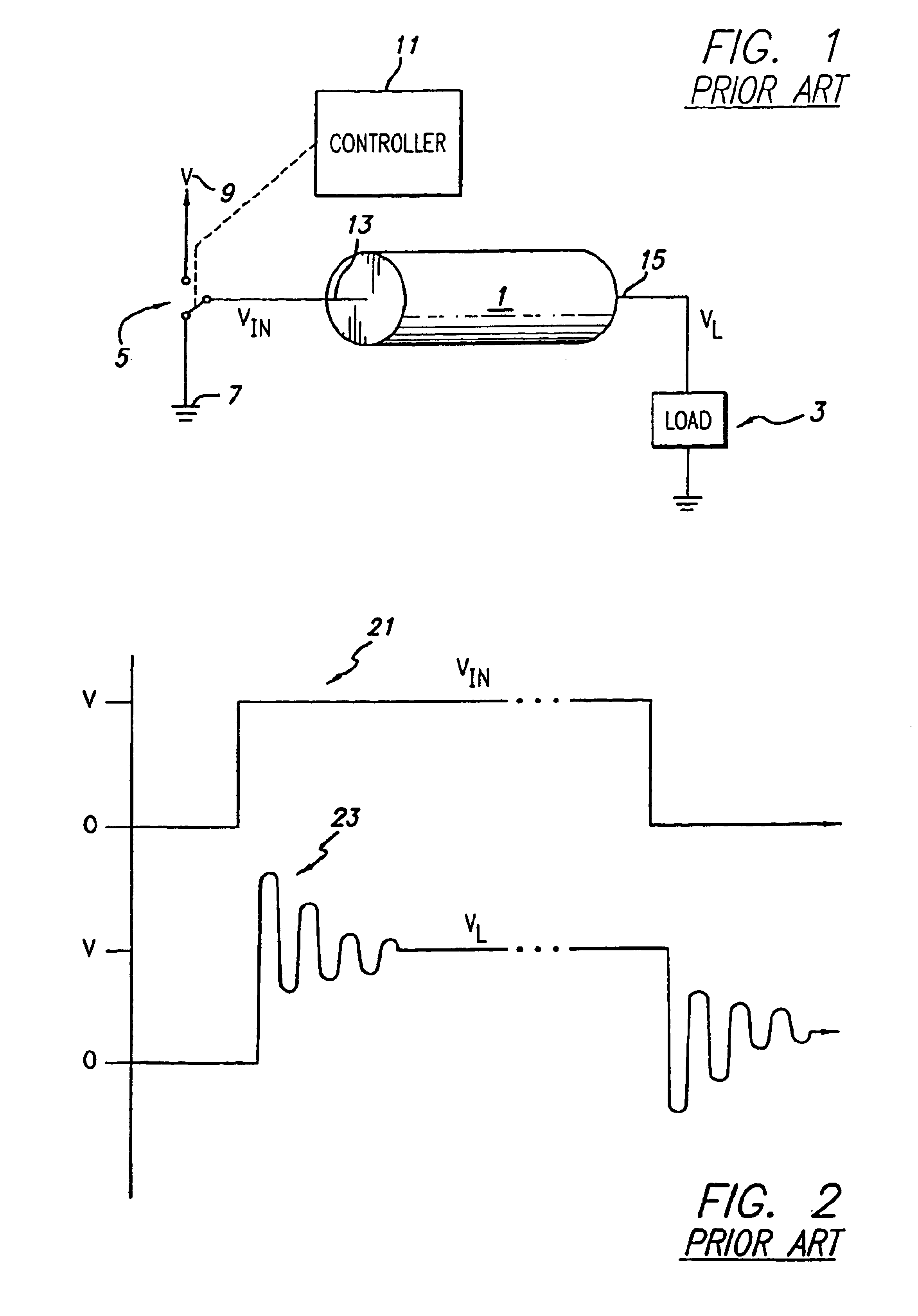Line reflection reduction with energy-recovery driver
a technology of energy recovery and driver, which is applied in the field of line drivers, can solve the problems of increasing the voltage on the transmission line to exceed the allowable or safe level, reducing the noise margin of line reflection in high-speed digital circuits, and reducing the noise margin of line reflection. , to achieve the effect of reducing ringing, increasing power dissipation, and reducing ringing
- Summary
- Abstract
- Description
- Claims
- Application Information
AI Technical Summary
Benefits of technology
Problems solved by technology
Method used
Image
Examples
Embodiment Construction
[0047]FIG. 1 illustrates a prior art line driver system.
[0048]As shown in FIG. 1, a transmission line 1 delivers a voltage VL to a load 3.
[0049]The transmission line 1 is driven by a driver. The driver includes a signal generation system, including a switch 5, a first drive signal 7 (which is shown in this example as being ground) and a second drive signal 9 (which is shown as being a source of voltage V). The signal generation system is connected to a controller 11 which electronically controls the switch 5, thus causing VIN at an input 13 of the transmission line 1 to switch between the first drive signal 7 (ground) and the second drive signal 9 (V). In a typical configuration, the switch 5 is an electronic switch, such as a FET, MOSFET, SCR, triac or BJT.
[0050]The goal of the prior art line driver system shown in FIG. 1, of course, is to cause VL at an output 15 of the transmission line that is across the load 3 to switch between the levels of the first drive signal (ground) and ...
PUM
 Login to View More
Login to View More Abstract
Description
Claims
Application Information
 Login to View More
Login to View More - R&D
- Intellectual Property
- Life Sciences
- Materials
- Tech Scout
- Unparalleled Data Quality
- Higher Quality Content
- 60% Fewer Hallucinations
Browse by: Latest US Patents, China's latest patents, Technical Efficacy Thesaurus, Application Domain, Technology Topic, Popular Technical Reports.
© 2025 PatSnap. All rights reserved.Legal|Privacy policy|Modern Slavery Act Transparency Statement|Sitemap|About US| Contact US: help@patsnap.com



